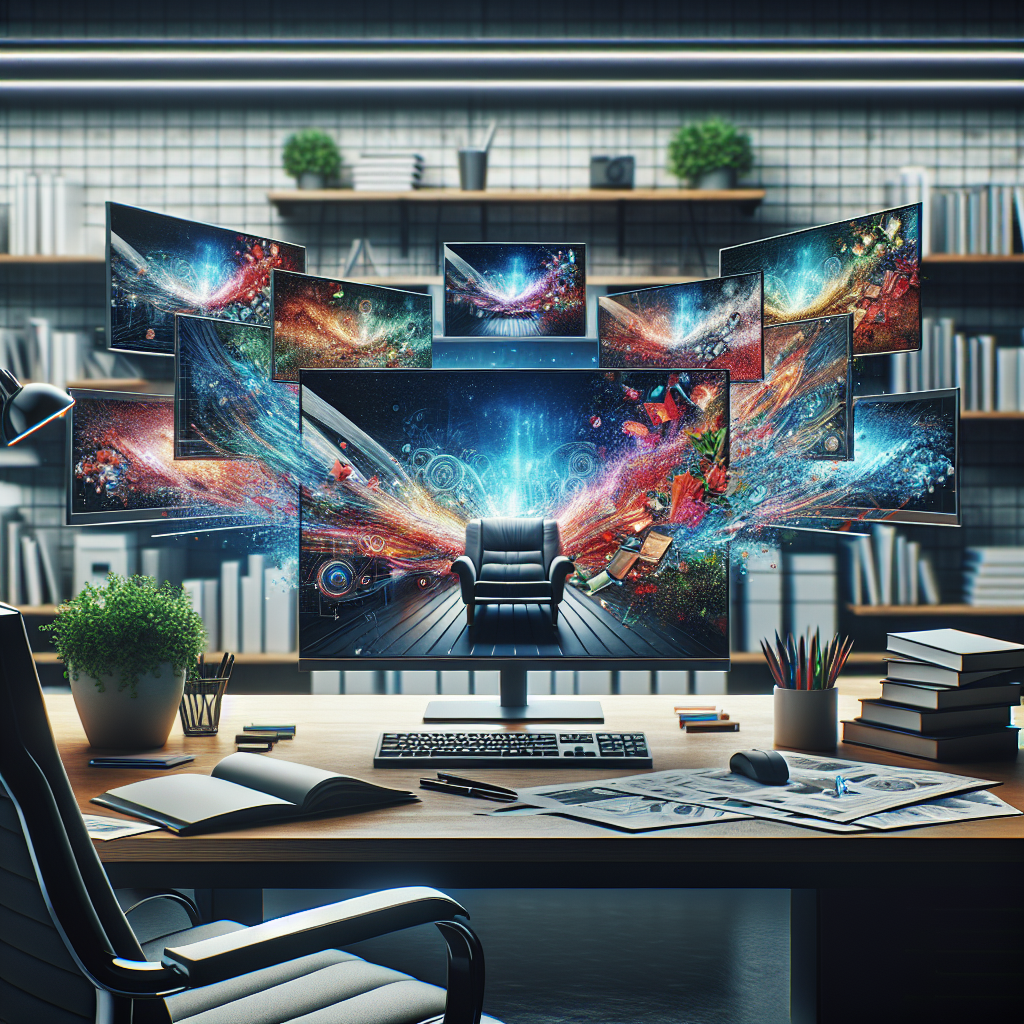Introduction
In today’s digital age, choosing the right LED monitor can make a significant difference in your overall computing experience. Whether you are a gamer, graphic designer, or simply need a reliable screen for everyday tasks, selecting the right monitor involves considering various factors that align with your specific needs. This article will guide you through the essential criteria required to make an informed decision.
Key Factors to Consider When Choosing an LED Monitor
| Factor | Description |
|---|---|
| Screen Size | Determine the size that matches your workspace and viewing distance. |
| Resolution | Choose between Full HD, QHD, or 4K according to your usage. |
| Refresh Rate | Higher refresh rates provide smoother visuals, essential for gaming. |
| Panel Type | Understand the differences between IPS, TN, and VA panels. |
| Connectivity | Ensure sufficient ports for all your devices. |
Screen Size
The screen size of your LED monitor should correspond to your available workspace and viewing distance. Larger monitors provide a more immersive experience but may require more desk space. Common sizes range from 21 to 32 inches, catering to different user preferences and requirements.
Resolution
Resolution is a critical factor in determining the clarity and detail of your monitor’s display. Here are the common resolutions and their appropriate use cases:
- Full HD (1080p): Ideal for general use and basic gaming.
- QHD (1440p): Suitable for professional work and competitive gaming.
- 4K (2160p): Best for high-end content creation and ultra-clear visuals.
Refresh Rate
Refresh rate, measured in Hertz (Hz), indicates how often the screen updates with new information per second. Higher refresh rates result in smoother animations and less motion blur. For gamers, a refresh rate of at least 120Hz is recommended, while 60Hz is sufficient for standard office tasks.
Panel Type
The panel type of an LED monitor affects its color accuracy, response time, and viewing angles. The three primary panel types are:
- IPS (In-Plane Switching): Offers excellent color accuracy and wide viewing angles, making it ideal for design work.
- TN (Twisted Nematic): Known for fast response times and high refresh rates, perfect for competitive gaming.
- VA (Vertical Alignment): Provides superior contrast ratios and deeper blacks, suitable for multimedia consumption.
Connectivity
Modern LED monitors come equipped with various ports such as HDMI, DisplayPort, USB-C, and more. Ensure the monitor you choose has enough input options to connect all your devices seamlessly. Additionally, consider the version of these ports, as newer versions support higher resolutions and refresh rates.
Additional Features to Consider
- Ergonomics: Look for monitors with adjustable stands to customize the height, tilt, and swivel according to your comfort.
- Built-in Speakers: Some monitors come with integrated speakers, which can be convenient for multimedia usage.
- Blue Light Filter: Protects your eyes from strain during prolonged use.
- HDR: High Dynamic Range enhances the overall visual experience with better contrast and color range.
Conclusion
Choosing the right LED monitor depends on your specific requirements and how you intend to use it. By considering factors such as screen size, resolution, refresh rate, panel type, and connectivity, you can find a monitor that enhances your productivity and entertainment experiences. Remember, investing in a quality monitor can significantly improve your overall computing satisfaction.

